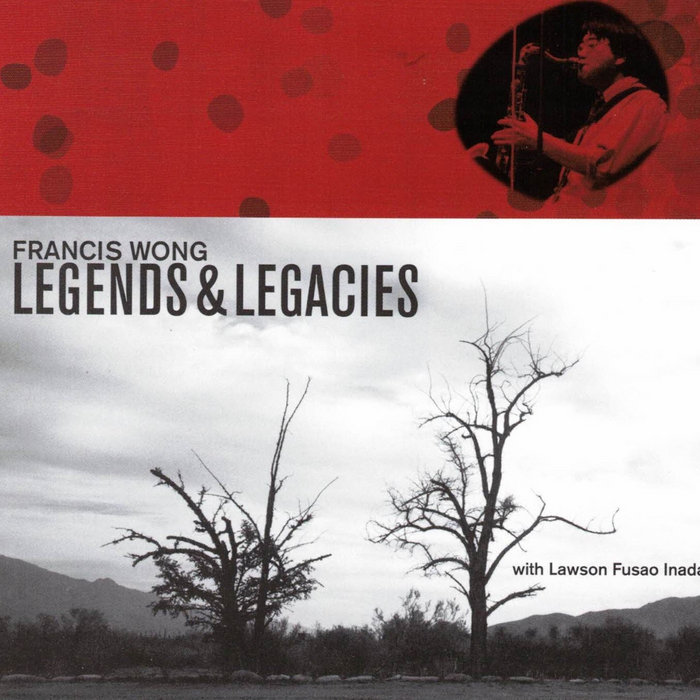
Something Grand (Soran Bushi) – Francis Wong
this blog is GROOVY – check out great Soul, Funk, Jazz, Hip Hop, Bass, Breaks , Reggae, House n many more TUNES
Jazz, baby! It’s a genre that dances across cultures, breaking barriers and blending styles like a sweet cocktail at your favorite dive bar. Among the many flavors of jazz is a spicy mix called Asian American Jazz. Let’s take a funky little trip through its history, tastes, and some hilarious tidbits about the musicians who make it groove.
It’s no secret that jazz has roots all over the world. Born in New Orleans from African rhythms and European harmonics, it quickly spread its wings into new territories. Enter stage left: Asian Americans! As immigrants started settling in the U.S., they brought their musical traditions along for the ride.
In the early 1900s, you had artists like Toshiko Akiyoshi, who would eventually blend elements of traditional Japanese music with big band jazz; she practically invented her own sound while sipping tea on her piano bench in Los Angeles. Meanwhile, during this time, jazz was booming in cities like San Francisco—home to many Chinese immigrants—and their cultural music influenced local sounds too.
Did you know that some musicians claim they can tell which Asian country someone hails from just by hearing them play? Apparently, each culture has its own “jazz accent.” So if you’re ever jamming with an Asian musician and you hear some unexpected koto vibes creeping into your sax solo… well now you know!
The post-war boom saw a huge rise in bands across America—big bands were popping up everywhere! Art Blakey’s Jazz Messengers became known for featuring amazing talents including Chick Corea, whose family hailed from Spain (not exactly Asia but let’s roll with it).
Then came Yasuhiko “Yasu” Takahashi, often credited as one of the first Japanese-American big band leaders. Yasu could whip up swing mixes so hot they’d get even your grandma tapping her feet! This era set off fireworks for collaboration between various styles including Latin influences—a true fusion fiesta!
One night at Birdland—the legendary NYC club—Takahashi accidentally mixed up his sheet music with salsa sheets because… well… he couldn’t read English very well yet! Imagine everyone expecting smooth bebop only to get “La Bamba”! It ended up being an epic party anyway!
In the ’70s and ’80s, everything got funky again when fusion took center stage. Musicians began experimenting more than ever before by mixing rock influences with traditional sounds from home countries. Enter stage right again: saxophonist John Zorn. This dude is not only known for his wild improvisation but also dabbling hilariously into avant-garde experiments that leave listeners either scratching their heads or laughing out loud.
Zorn collaborated with performers drawing on global beats—from Middle Eastern motifs to Far East scales—all while adding punk attitude to make raging jams that could blow any cobwebs off a rehearsal space.
John Zorn once played an entire show without using sheet music or knowing what songs were next on his setlist—he just went by instinct (and let me tell ya—it was as chaotic as it sounds!). How’s that for living dangerously?
Fast forward to today where we find vibrant voices rising within Asian American Jazz scenes such as trumpeter Ambrose Akinmusire (with Nigerian roots), violinist Jennifer Koh, and pianist Helen Sung. These artists aren’t afraid to break boundaries further while still respecting their lineage—it’s about embracing every note shaped by personal stories along this journey.
These musicians are also engaging wider audiences through social media platforms—sharing clips filled humorously geeky commentary about theory jargon whilst betting fans transformation tricks alongside deep cuts straight outta Chinatown record shops!
Ever tried explaining complex musical concepts over Twitter’s character limit? Imagine Helen Sung doing just that…and then dropping gifs of cats playing pianos mid-sentence! You’d be learning voicings while giggling uncontrollably at how relatable these virtuosos truly are!
So here we are folks; nestled snugly among legends past down through groovy tunes spun around basslines drawn together worldwide seamlessly integrating cultures without clashing intensity characteristic harmony sets true identity apart distinctly impacting us forever connecting hearts souls globally one strum pluck beat breathless moment captured eternally dancing away troubles worries lingering swooning euphoria blissful activity resonates hard deeply inside transcend dimensions shapes forms bringing joy laughter life itself celebration always existing timeless accompanied metaphorical rhythm pulse felt universally allowing unique expressions flourish thrive unite beautifully diverse whole daring redefine creativity art inspirations soar high breathe freely canvas live color brilliantly sparkling vividly unrestrained allure means everything fabulous pushing envelopes blooming everywhere 💖🎶✨
And there you have it—the mesmerizing world of Asian American jazz infused throughout each era bubbling full flavor cultural stew rich exquisite delightful funny inspiring bouquet unmistakably enchanting inviting keep spinning round meet those intriguing artists remember follow wherever journeys go jam share smile laugh enjoy chase magic summoning beyond worlds poised dream equal notes dance free keep going 🎷🌈

Something Grand (Soran Bushi) – Francis Wong